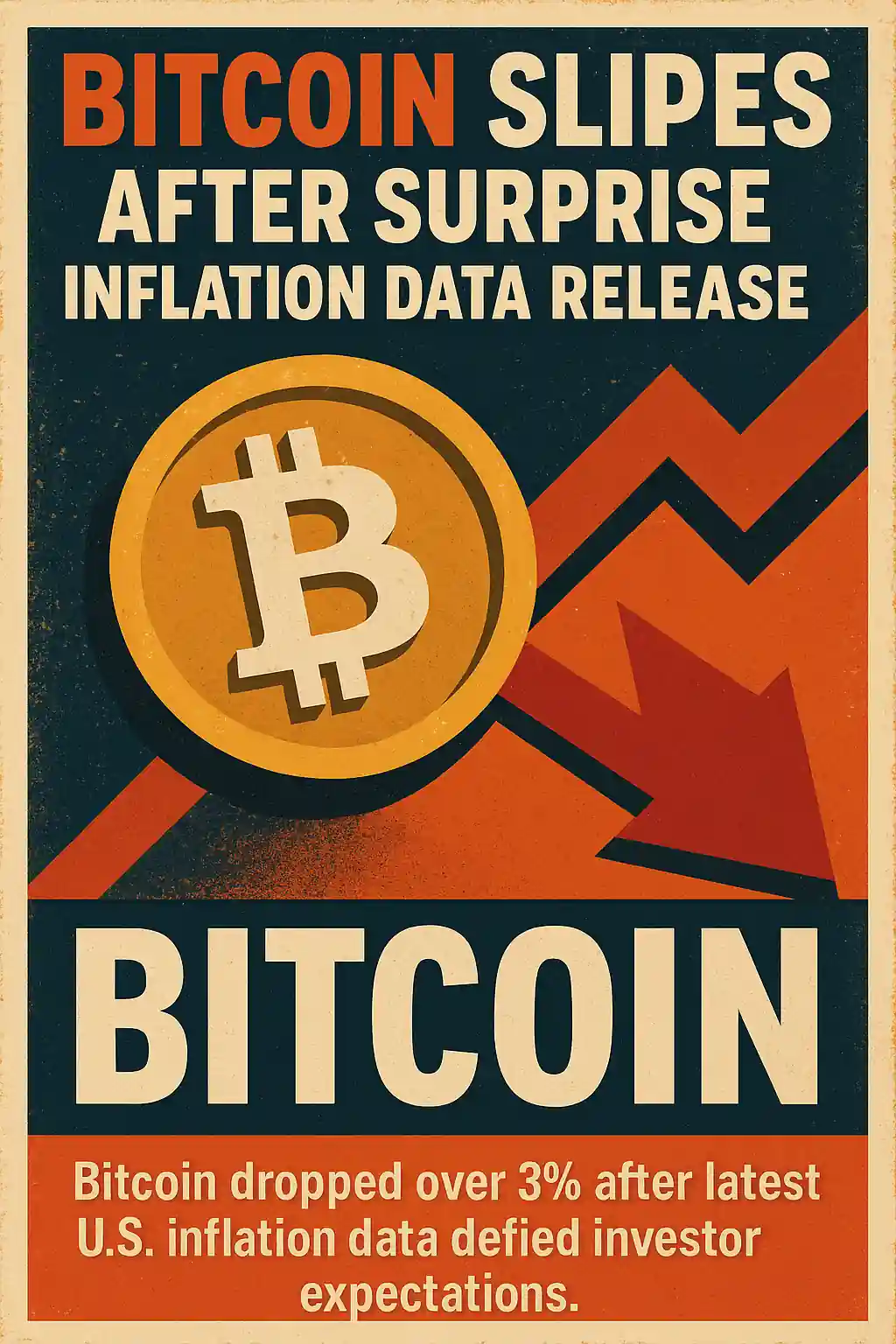Bitcoin Slides After Surprise Inflation Data Release
Bitcoin dropped over 3% Thursday morning to around $102,100 after the latest inflation data caught investors off guard. The Producer Price Index (PPI) fell 0.5% in April, defying expectations for a 0.2% increase. Core PPI also declined by 0.4%, raising fresh questions about the strength of consumer demand.
As the broader crypto market flashed red, Ethereum, Solana, and Cardano all posted similar declines. The unexpected data points triggered uncertainty around interest rate policy and the health of the U.S. economy.
PPI and Retail Sales Suggest Cooling Inflation, Weak Demand
The April inflation report showed the steepest drop in services prices since tracking began in 2009. Trade services fell 1.6%, while margins for machine and vehicle wholesalers plunged 6.1%. At first glance, lower inflation typically boosts risk assets like Bitcoin, since it may prompt Federal Reserve rate cuts.
However, soft retail data tempered optimism. Retail sales rose only 0.1% in April, far below March’s 1.7% increase. The “control group” — which feeds into GDP — actually fell 0.2%, suggesting sluggish economic activity.
Bitcoin Reacts to Mixed Economic Signals
For Bitcoin, which behaves like a high-beta tech asset, the signals are mixed. Lower inflation supports the possibility of easier Fed policy, potentially bullish for Bitcoin. But falling consumer demand raises fears of a slowdown — typically bearish for speculative assets.
April’s CPI came in at 0.2% month-over-month and 2.3% year-over-year, slightly under the 2.4% forecast. While the softer inflation data may boost hopes for 2025 rate cuts, weak consumption adds uncertainty to that outlook.
Market Hopes for Fed Rate Cuts in 2025
The Federal Reserve now faces a complex decision. On one hand, easing inflation could justify rate cuts. On the other, weak economic activity could call for caution. This tension is affecting how investors approach Bitcoin and other crypto assets.
The year-over-year headline PPI rose just 2.4%, while core PPI matched forecasts at 3.1%. These figures point to cooling cost pressures across supply chains — a trend that may give the Fed space to pause or lower rates later this year.
Bitcoin Stocks Take a Hit Amid Market Uncertainty
Crypto-linked stocks followed Bitcoin lower. Coinbase dropped 2.4% in premarket trading. MicroStrategy fell 1.1%, and Robinhood dipped 1.6%. Crypto mining firms Marathon Digital and HIVE Digital also declined around 2%.
The price pressure shows how sensitive crypto stocks are to macro data. For now, the lack of clear direction in inflation and growth data has rattled confidence.
Bitcoin Outlook Depends on Fed and Consumer Trends
Looking forward, Bitcoin’s trajectory depends heavily on how the Federal Reserve interprets the latest inflation and consumer data. If rate cuts materialize and economic activity stabilizes, Bitcoin could recover quickly.
But if fears of stagnation grow, the current downturn may persist. Investors will be watching the Fed’s next moves closely, as well as upcoming consumer spending trends, for clues on what’s next for Bitcoin and the broader crypto market.




